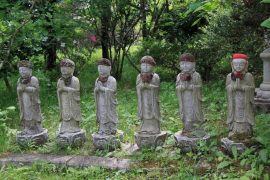 There were several occasions while reading Inga Simpson‘s new novel, Where The Trees Were, when I would close my eyes and feel the sensual complexity that vividly conjured up the landscape of rural Australia. From the raucous cacophony of flights of cockatoo to the, the rasping cadences of the wind in the beautiful gum trees, the taste of red earth dust in your mouth, the tantalizing anticipation of pregnant rainclouds. The novel opens in 1987 in a small rural community in the Lachlan Valley in Australia’s New South Wales. Jay and her friends Kieran, Josh, Ian and his younger, tagalong brother Matty, lead a near idyllic existence, disappearing at sunup roaming extensively across the wide although before returning tired and dust caked at dinner time.
There were several occasions while reading Inga Simpson‘s new novel, Where The Trees Were, when I would close my eyes and feel the sensual complexity that vividly conjured up the landscape of rural Australia. From the raucous cacophony of flights of cockatoo to the, the rasping cadences of the wind in the beautiful gum trees, the taste of red earth dust in your mouth, the tantalizing anticipation of pregnant rainclouds. The novel opens in 1987 in a small rural community in the Lachlan Valley in Australia’s New South Wales. Jay and her friends Kieran, Josh, Ian and his younger, tagalong brother Matty, lead a near idyllic existence, disappearing at sunup roaming extensively across the wide although before returning tired and dust caked at dinner time.
Their usual destination is a portion of a small river that forms a small but loop through usually ending up at the stream. It not only provides water for the livestock but also a swimming hole for the little group to while away idly productive holidays.
It’s there that they find a stand of trees where a shield-shaped section of bark had been cut away and designs carved into the heartwood. They later discover to be ancient arbographmarks, carvings used mark the graves of significant Wiradjuri elders. But they immediately feel that they have found something important and make a pact to always protect the trees, and each other. It’s a promise that inadvertently leads tragedy and a lingering impact of what might have been.
The story unfolds in parallel narratives the first by the juvenile Jay, the second by the adult Jayne, 17 years later, working at a regional art gallery where she helps someone steal a seemingly under-appreciated exhibit. She has settled into a tender but often uneasy relationship with Sarah, who is senior member of a government department.
Simpson skillfully uses small personal discrete events to reflect the larger issues like the strains placed on the environment, the economic sustainability of rural communities, the understanding of and respect for indigenous heritage. There’s a passion that is all the more powerful for its restraint.
Simpson has carved herself a niche in Australian literature which has seen her on the short-list for a  number of awards. Her debut novel Mr Wigg, set in the apple orchards of New South Wales during the mid 1970s about a man coping with the death of his wife and his adult son’s decision to move into the nearby town. Her follow-up, Nest, took the reader to a remote house in Coastal Queensland where artist and teacher Jen is retreating further and further into the world of birds and the rainforest that surrounds her. Like Where The Trees Were, they are both characterized by Simpson’s eloquent but understated prose.
number of awards. Her debut novel Mr Wigg, set in the apple orchards of New South Wales during the mid 1970s about a man coping with the death of his wife and his adult son’s decision to move into the nearby town. Her follow-up, Nest, took the reader to a remote house in Coastal Queensland where artist and teacher Jen is retreating further and further into the world of birds and the rainforest that surrounds her. Like Where The Trees Were, they are both characterized by Simpson’s eloquent but understated prose.
The eye-catching cover of Where The Trees Were was designed by Alison Colpoys and reflects the distinctive Melaleuca or paper bark tree. The book is published by Hachette Australia.

Comments are closed.